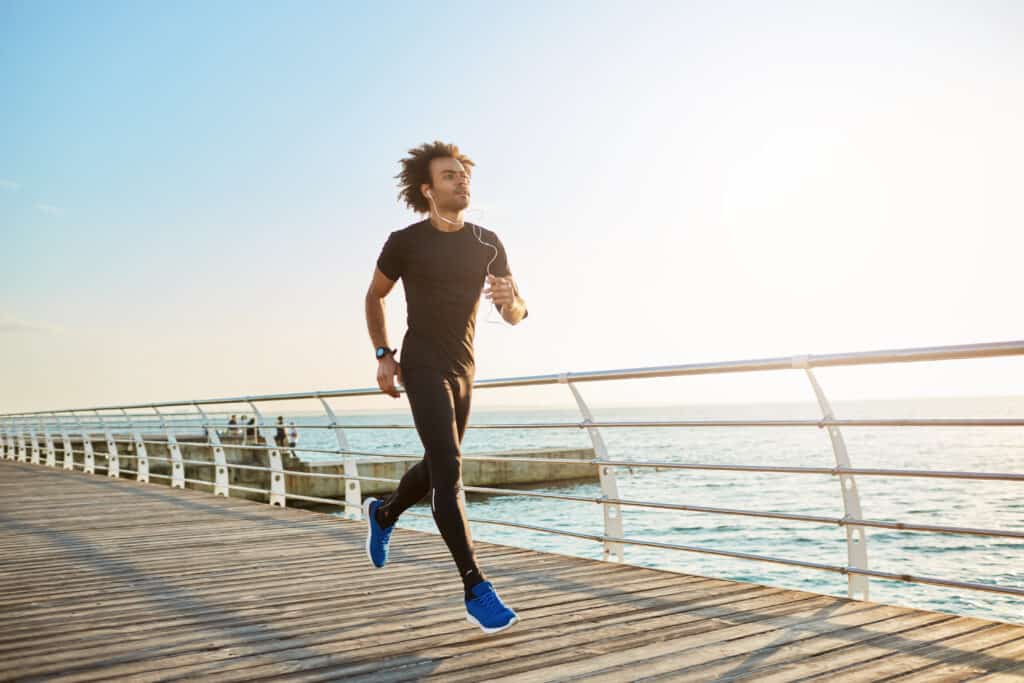When we’re young we can feel invincible, but as we age, that invincibility can slowly deteriorate. The short-term goal for many is to maintain an active lifestyle throughout their twenties and thirties. The thinking behind this is that if you start young, the habit will carryover into the golden years. One of the key ingredients in this scenario is sustainability. The long-term goal should be to maintain a healthy lifestyle no matter what decade of life someone is in.
An Active Lifestyle is a Mindset
In its simplest form an active lifestyle incorporates physical activity into every day life. The time invested in activities like walking, biking, running and strength training are well worth it. Maintaining a consistent routine with such activities will keep chronic disease at bay. A physically active lifestyle is beneficial for the body and the mind. The by-product of an active lifestyle improves everything from quality of sleep to
Three Types of Physical Activity
Physical activity consists of three components, muscular strength, cardiovascular endurance and flexibility. It’s important to focus on these individual components and add each one into your weekly training program.
Muscular Strength
Muscular strength is defined as the maximum amount of force a muscle or group of muscles can produce during a single bout of exercise. There are many reasons why this is so important to maintain throughout ones life. One of those big reasons is lean muscle mass. If you don’t engage in regular strength training you lose muscle mass. Period. If you do not strength train regularly, as you age, you become part of a statistical group that loses approximately 5-8 pounds of lean muscle mass with each passing decade starting at about age thirty-five. Let’s just end by saying those numbers get much worse after fifty.
Cardiovascular Fitness
Is the ability to move the body over a sustained period of time. It’s critical to improve and maintain cardiovascular fitness throughout your lifetime. By doing so, you’ll reduce your risk of developing heart disease by increasing the efficiency of your heart, lungs, and blood vessels.
Flexibility
This is the ability of a muscle or group of muscles to move through a range of motion. Flexibility is a component of mobility.
Benefits of Maintaining a Lifelong Active Lifestyle
Here are a few examples of the benefits associated with enjoying an active lifestyle.
- Research published in 2013, in the journal Lancet, reported among people with early signs of pre-diabetes, taking an extra 2,000 steps each day, or the equivalent of a 20-minute moderate-paced walk, helped lower their chances of heart problems.
- Over the course of a yearlong study, an additional 8 percent lower risk of heart disease was observed for every 2,000 steps walked a day.
- Scientists from University College London performed a meta-analysis of peer-reviewed journals between 1970 and 2007. The studies evaluated 459,833 test-subjects who were absent of cardiovascular disease at the start of the investigation. The subjects were followed for an average of 11.3 years with all cardiovascular events recorded. Their analysis makes a strong case for the benefits of good old walking. The study showed walking reduced the risk of cardiovascular events by 31 percent and decreased the risk of dying by 32 percent.
- The Harvard Alumni study found men who average at least eight flights of stairs a day enjoy a 33 percent lower mortality rate compared to men who are sedentary.
- Research shows that people who sit the most have a 112 percent increase in the Relative Risk (RR) of diabetes and a 147 percent increase in the RR of cardiovascular events compared to people who sit the least.
Review of Physical Activity on Awareness & Mood Levels
A research paper published by Berger titled Psychological Benefits of an Active Lifestyle looked at the key benefits derived from an active lifestyle. According to Berger, “exercise has many benefits…, it is important to explore ways in which exercise might become something one “wants” to do several days a week. Possible sources of enjoyment and motivation for physical activity may include “feeling better” or mood alteration; stress reduction; and enhancement of self-concept, self-awareness, and even self-knowledge.”
Adding the components of physical activity (strength, endurance, flexibility) into your workouts will allow you to make the most of each day. Finally, turning this into a habit now when your young will pay back stronger dividends when you’re older. \
Stay Strong Together
Jefit, named best strength app by Sports Illustrated, Esquire, GQ, Men’s Health, Greatest, Forbes Health, and many others over the years, has a community responsible for 92,000,000 workouts to date! The app, which has 10 million downloads, comes equipped with a customizable workout planner and training log. The app has ability to track data, offer audio coaching cues, and can share workouts with friends. Visit our members-only Facebook group. Connect with like-minded people, share tips, and advice to help get closer to reaching your fitness goals.
- Why Lifters Choose JEFIT App for Real Strength Gains - December 3, 2025
- Nutrition Trends Bodybuilders are Talking About in 2025 - November 26, 2025
- Smart Strength Training Backed by Jefit Data - November 19, 2025
